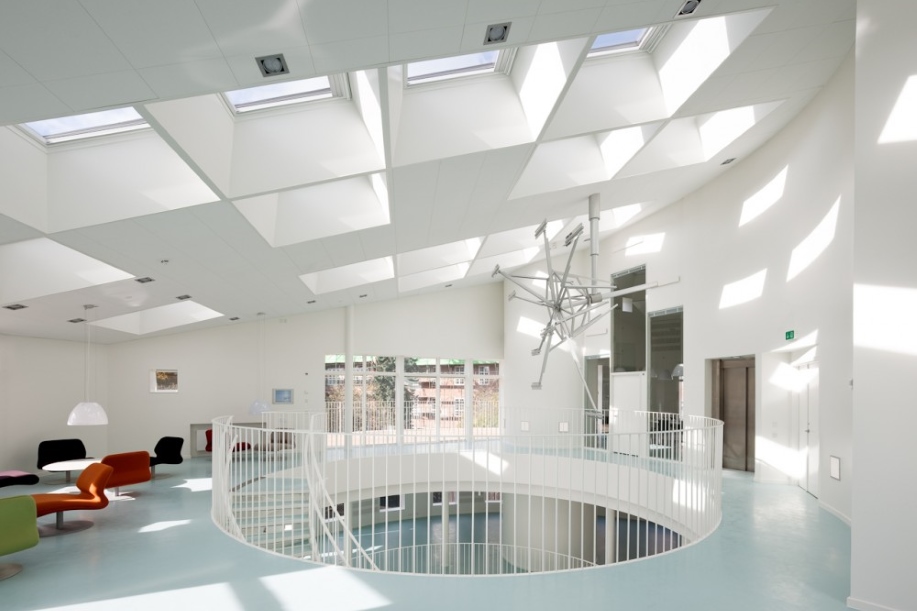Light is knowledge and well-being; it gives people the possibility of perceiving what surrounds them and makes the surrounding environment a living space. The sun naturally provides this well-being; but when we have to use artificial light, do we really know how to adapt it to human needs? If artificial light spots are well positioned, they can make spaces more welcoming and ensure a greater comfort.

Given its importance, a scientific discipline has also been established to study outdoor and indoor spaces lighting solutions. The discipline is called lighting engineering.
Having some knowledge in lighting is fundamental for the correct design of artificial lighting spots.
In working and living spaces, selecting correct artificial lighting sources ensures the individual with an adequate mental comfort and an appropriate environment for the performance of normal activities that require the use of sight.
Although natural lighting meets the quality standards for a perfect lighting situation, a correct lighting spots design can also guarantee excellent results for artificial lighting.
Well-designed artificial lighting solutions make it possible to give relief to a painting, to make a room looking larger or smaller than its real size, and help to create a romantic or festive atmosphere. But this isn’t all.
The quality of artificial lighting
Light is a fundamental element for the correct psycho-physical balance of human beings. In environments where individuals spend most of their day, it is important to ensure a proper lighting, i.e. a light which is not released by a neon or by energy-saving lamps (suitable for environments where people do not normally spend much of their time).
Various disciplines are concerned with studying light and its influence on living beings.
As we have previously mentioned, lighting engineering is dedicated to the study of indoor and outdoor artificial lighting, chromotherapy studies the influence of colours on people’s well-being, while heliotherapy is the natural science that exploits the direct exposure to sunlight for purely therapeutic purposes.
More specifically, chromotherapy, which studies colours and their influence on people’s well-being, is particularly important for the quality of light.
The Swiss psychotherapist, Max Lüscher, has demonstrated the “therapeutic” effect of colours on the human organism. He devised a test to analyse the psychic condition of the human being through colours, known as the Lüscher colour test.
According to the principles of chromotherapy, each colour conveys an emotion. Red conveys energy, stimulates libido and decongests the respiratory tract; orange has antidepressant properties, stimulates the proper functioning of the thyroid gland and gives happiness; yellow helps the individual in mental concentration and alleviates some digestive problems; green brings benefits against stress and insomnia; blue is useful in cases of high blood pressure and migraine. Cold colours, such as blue and green are suitable for bedrooms because they relax and help falling asleep, although the latest studies do not recommend using cool colours in environments where you spend much of your time.
The combination of light and built environment
Building designing, in addition to respecting urban and architectural standards, must ensure psycho-physical and well-being conditions for individuals. Modern architecture uses lighting systems that ensure an ideal use of natural light.
As regards to the relationship between buildings and men, it is essential to design clear openings in buildings that allow natural daylight to be used as much as possible. Transparent materials used in the construction industry perform a very important task because their correct use makes it possible to heat and light the rooms, using artificial lighting and heating only for a limited time.
The calculation coefficient for optimal daylight illumination is called daylight. Daylight plays a fundamental role in the design of working spaces (offices, schools, hospitals) and, although for quite some time it was mainly applied to foreign projects, today it is also considered in the Italian building designing.
In a home or in an office, to optimize the visual well-being of the individual, it is essential to distribute light sources following some basic criteria, including: eliminating reflections, optimizing contrasts, distributing shadows, painting walls and ceilings with light and neutral colours, and keeping light sources clean.
- To properly light your home, it is not enough to buy the type of chandelier you like and the bulbs; to correctly illuminate your home environment, it is advisable to rely on a lighting designer who is also sensitive to the issue of lighting technology, to whom you can express your personal taste in terms of light diffusion and needs.
The task of the light designer will be to recommend you the solutions that best suit your lifestyle, proposing the ideal temperatures and colours of the lamps according to the room, their perfect location and the best type of light sources (chandeliers, wall lights, spotlights).
- In the workplace, a correct lighting must be guaranteed at all times and under all circumstances. The employee must have a good lighting to do his job in a perfect state of mind. In these places, the direction of the light flow is important, i.e. direct, semi-directed or mixed lighting.
It seems obvious that artificial light must be considered as a fundamental element in the design of all human environments as regards to the impact that it represents on human beings’ biological clock and consequently on their well-being and even on their physical and mental health.
